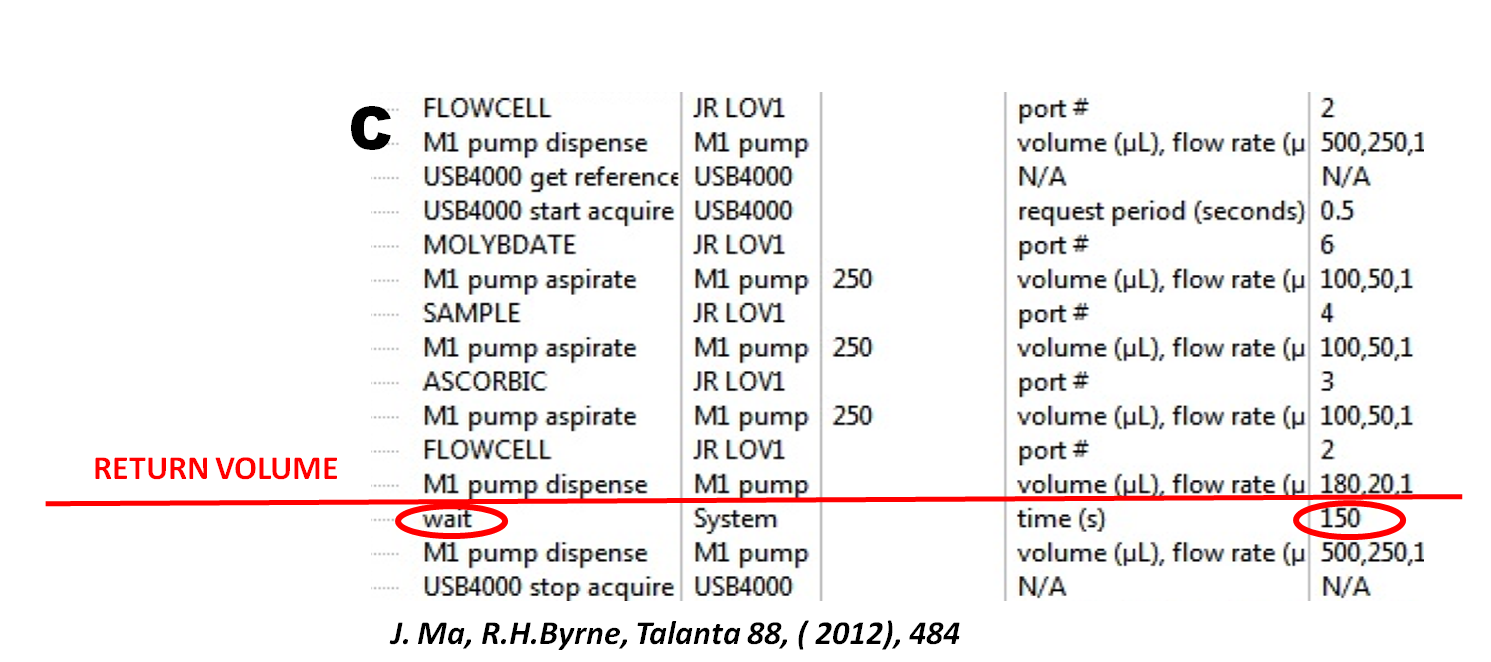Sensitivity of SFC assay is optimized by:
- Maximizing the slope of reaction rate curve
- Minimizing the blank value
By position the centroid of the reaction mixture in the middle of flow cell light path the highest sample concentration will be monitored, thus yielding the highest achievable slope (2.2.8). The convenient way to identify this return volume is to record SHC response at high Si concentration at a slow flowrate (20mcrL/sec) and accelerate the flow rate (to 500mcrL/sec) after a selected return volume passed trough the flow cell (A). The superimposed responses for two sample volumes (50 & 100mcrL) and return volumes (180 & 250 mcrL), identified the return volume of 180 mcrL, as the best to be used for both SHC (2.2.31.) and SFC protocol (B).
Ascorbic acid reduces ammonium molybdate to molybdenum blue and the rate of this reaction which increases the blank value, as the acidity of the reaction mixture decreases (C). In order to minimize the blank value, the concentration of sulphuric acid in molybdate reagent should be 0.2 to 0.3 M, which is higher than 0.1M sulphuric acid recommended for FI based method (Ma and Byrne, 2012) but this difference is due to dilution, since SI method uses DI water as the carrier into which only 100 mcrL of molybdate reagent is being injected.
Silicate Assay
High Sensitivity SFC Method
2.2.32.











